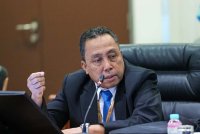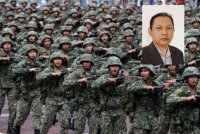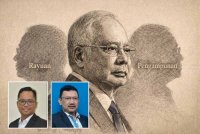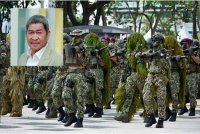Rethinking the 5G rollout
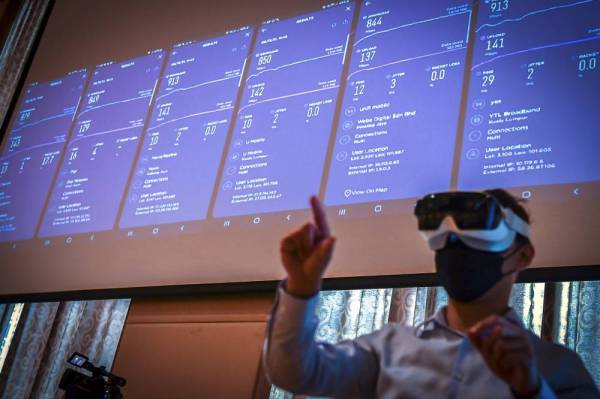
The single wholesale network (SWN) model for Malaysia’s 5G rollout under the auspices of special purpose vehicle (SPV) Digital Nasional Bhd (DNB) as part of the MyDigital blueprint needs a rethink.
There appears to be lack of clarity and transparency in the implementation of the 5G rollout.
Why was the spectrum not auctioned off to the private sector which would have raised revenue for the government? It could be argued that the private sector will have to borrow on a higher interest rate. But this can be easily circumvented with the government facilitating the setting up of a banking consortium enjoying fiscal incentives to act as loan provider.
The main argument in favour of SWN has been that telcos are generally reluctant to invest for coverage in rural areas.
However, this ignores the fact that we already have the pre-existing Universal Service Provision (USP) fund set up precisely for this purpose/contingency, i.e., as the mechanism for bridging the urban-rural digital divide under the provision of Section 204 of the CMA 1998.
USP mandates operators (as licensees) to channel their private sector contributions based on the list of “designated services, weightage factors, and 6% of weighted net revenue.
This can simply be extended for the 5G rollout – perhaps with the government providing ringgit for ringgit matching grant.
The DNB then can simply function as sub-regulator and enforcer (setting the benchmark and standards) under the Malaysian Communications and Multimedia Commission (MCMC) and, not least, spectrum auctioneer.
For our rural coverage, fibre is still critical.
Fibre connectivity is essential since 5G is still dependent on wired network to transmit data at very high speed over long(er) distances.
5G wireless networks use high-frequency millimetre waves. However, in delivering extreme capacity throughput and very low latency performance, these waves can only travel about 60 metres.
This means that operators will still have to rely on fibre networks for the final stage of connectivity.
Rural terrain in the form of the following makes 5G network to be heavily dependent on fibre:
- Less infrastructure and facilities necessary for both “backhaul” (and even more so for “fronthaul”) operations; and
- The type and level of demand or traffic load due to demographic or socio-economic profile and population density.
Whereas fronthaul operations represent the link between the macro cells and the micro cells that are the devices “added-on” to existing structures such as buildings and perform the same functions as macro cells but servicing last-mile and end-user connectivity.
In our rural context, fronthaul operations would be in the form of fibre optics cables that connect to the backhaul operations linked by RAN.
For rural Malaysia, microwave hopping from one tower to another tower is inadequate and unsuitable to handle the demands of the 5G network – because it requires more installation of macro cell infrastructures which adds to the costs.
And so 5G as wireless, on the one hand, and fibre, on the other hand, mutually complement each other and intertwine.As such, the SWN network via the DNB (on behalf of the MCMC) should have been (re)calibrated to roll out fibre (together with TM and Time Dotcom, etc. and even TNB via its underground power cables), instead, as part of the continuation of the pre-existing National Fiberisation and Connectivity Plan (FBCP) which is meant to bridge that urban-rural digital divide – in addition to auctioning of the spectrum supply.
The mobile network operators (MNOs) can then plan their business strategy and invest accordingly in their respective 5G infrastructure.
Recall that the previous Perikatan Nasional government – through a ministerial order from the Ministry of Multimedia and Communications last year – awarded the development of the 5G frequency spectrum to Celcom, Maxis, Digi and TM (the nation’s four main mobile network operators/MNOs) as well as to Alltel (mobile virtual network operator/MVNO).
Although the award was given individually, it’s done without open tender. This ostensibly sent “shockwaves” throughout the industry.
Prior to the ministerial order, MCMC had already in a directive proposed a national wholesale 5G network – in the 700MHz and 3.5GHz bands – jointly owned by operators (i.e., as a consortium).
This is, of course, consistent with the critical need for MCMC to step up to its role as the regulator of the converging communications and multimedia industry in Malaysia by ensuring that the experience of the High-Speed Broadband (HSBB) model isn’t replicated under the 5G plan, i.e., in reference to TM’s monopoly in the upstream and wholesale market.
An established think-tank (which is now more or less defunct, practically speaking) had recommended for a consortium approach (re HSBB) back in 2019, among other competitive alternatives.
The purpose of a consortium is to ensure the streamlining and rationalisation of anti-competitive practices throughout the supply chain and all levels of the market (upstream, mid-stream and downstream) whilst ensuring that capital expenditure (capex) for the infrastructure can still be shared among the operators.
The setting up of a consortium was to be done via open tender or bids, and thereby provided assurance of a level or open playing field for smaller telcos.
The financial challenge with a SWN model is as GSMA, the world’s leading mobile operators’ association, has put it in its report, “Single Wholesale Networks Lessons from Existing and Earlier Projects” (2019), i.e., anti-competitive and inhibitive to innovation and investment.
The report highlights the experience of Belarus, Mexico and Rwanda. Although not directly applicable to Malaysia, lessons from the three countries, among others, raises the question of efficiency (e.g., optimal use of spectrum facility) and effectiveness in terms of outreach to the rural areas. The report adds that “[p]rojects in Kenya, Russia, South Africa have all either failed, been delayed or abandoned”.
All of the countries mentioned have certain systemic and structural issues in common with Malaysia, namely the political-business nexus (to be distinguished from the wider State capitalism model on the whole) raises questions of transparency and equity.
In the latest report commissioned by GSMA and prepared by DT Economics entitled, “Safeguarding the road to 5G in Malaysia: An economic risk assessment of Malaysia’s 5G plan” (August 2021), eight “risks” have been identified with the SWN model in the form of DNB.
Some of these are as follows:
Risks 1 – Lack of clarity in policy objectives (& 8 – Lack of clarity of DNB mandate) “Clarity on these objectives is a must to ensure the DNB is fit for its purpose, subject to an appropriate regulatory framework and its performance is judged against an appropriate set of indicators”.
EMIR Research comments: DNB’s role may well, in practice, duplicate that of the MCMC as regulator and supervisor of the telco sector. This is especially where DNB can be used to shield telcos from legally warranted intrusion by the MCMC for anti-competitive activities in the future.
The “intermediation” of DNB can disincentivise telcos from taking early action to remedy any defects arising from the 5G rollout. This is so since the burden of responsibility can be easily shifted back to DNB.
Risks 2 – Adverse impact on economic efficiency (& Risk 3 – Unclear approach to spectrum pricing) “Given one of the Malaysian Government’s key considerations is to reduce the deployment costs of the 5G network, there is a risk that productive efficiency (e.g., lower costs of network deployment) is maximised to the detriment of allocative and dynamic efficiency (e.g., innovation in the type and quality of 5G services offered over time). As a monopoly network operator, it is vital that the DNB is incentivised to invest and innovate”.
EMIR Research comments: Although the government has assured that DNB will only charge less than 20 sen per gigabyte (GB) under a cost-recovery model, there is no guarantee that this translates into an automatic savings for the consumer – in the form of RM1 per GB as opposed to RM2 per GB under 4G. Should merger among the big telco players/major MNOs, e.g., Celcom and Digi go ahead, this reduces competition which could stifle cheaper consumer prices.
And is the government expected to step in and subsidise the costs should there be overruns in the event? In addition, GSMA’s report, “Single wholesale networks and network sharing: sharpening discussions on the 5G repercussions” (December 2021) highlighted the constraints of a SWN on innovative services e.g., network slicing (i.e., the division of network capacity to meet the different traffic load under market segmentation) and edge computing.
Although the government is reported to be relooking at the SWN model, certain parties are adamant that it’s still the best route, going forward.
In the final analysis, the policy pendulum has so far swung from direct negotiation under the “infamous” ministerial order to SWN which equally has provoked lacklustre response from the industry and market.
As such, SWN only works when there is industry and market confidence.
That the SWN has raised more questions and doubt than answers, and the fact that the government is compelled to relook at the model could well point to its eventual expiry.
Dr Rais Hussin & Jason Loh Seong Wei are part of the research team of EMIR Research, an independent think tank focused on strategic policy recommendations based on rigorous research.
Muat turun aplikasi Sinar Harian. Klik di sini!

